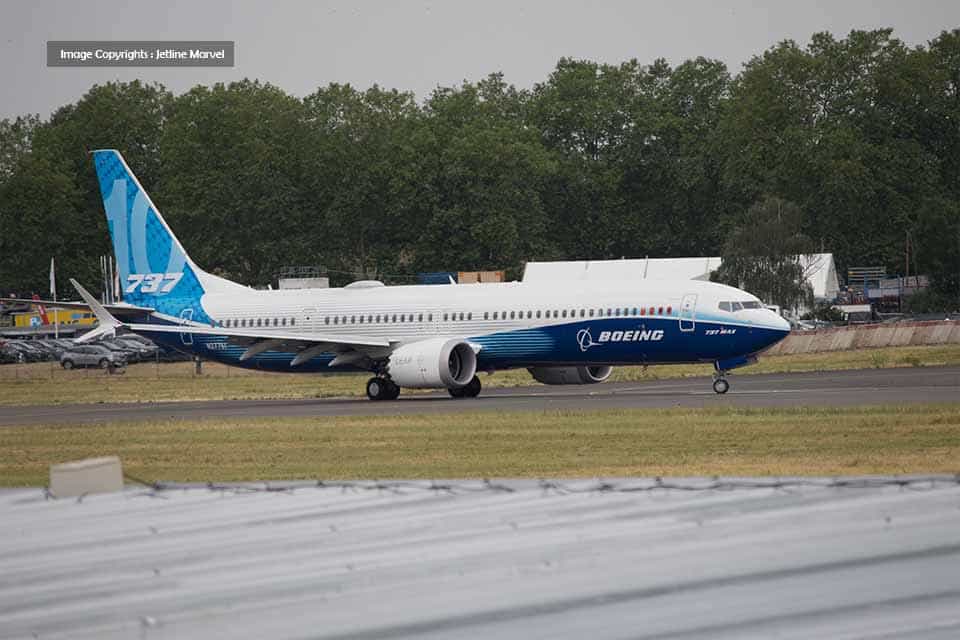Aerospace
US FAA clears Boeing flight tests for 737 MAX 10 certification

The FAA recently granted type inspection authorization for the 737 Max 10, a crucial step that enables FAA pilots to participate in the necessary flight testing for the aircraft’s certification for regular operations. In a letter to employees, three Boeing executives highlighted this milestone as a significant step forward.
This development comes as a pivotal moment for Boeing, following the global grounding of the 737 Max series. The long-awaited type inspection authorization (TIA) for the 737-10 signals the commencement of formal FAA certification flight testing, representing a substantial achievement in Boeing’s progress since the 737 Max’s return to service.
Boeing 737 Max competing with A321
The Boeing 737 Max 10 is an enhanced version of the 737 Max family, capable of accommodating more passengers and offering an extended range in the aircraft segment. Positioned as a direct competitor to the European-built Airbus A321, the 737 Max 10 boasts the latest avionics, engines, and framework.
The history of the Boeing 737 Max has been marked by intense scrutiny, primarily due to two fatal crashes in 2018 and 2019. These incidents prompted regulatory bodies worldwide, including the Federal Aviation Administration (FAA), to mandate comprehensive changes and improvements to the 737 Max series before it could resume operations.
Boeing responded by implementing software updates and modifications to address the identified issues, accompanied by enhanced pilot training programs.
Significant step closer to the global entry of the 737-10 into passenger service.
Despite facing significant market backlash and revenue losses, Boeing has diligently worked on the recertification of the 737 Max series. While some variants received certification in early 2021, the latest addition, the Boeing 737 Max 10, was temporarily on hold.
The recent certification marks a significant achievement, as expressed in the statement by Boeing’s senior executives, signaling a step closer to having the 737-10 enter passenger service globally.
The Federal Aviation Administration (FAA) has granted approval for Boeing (NYSE: BA) to initiate flight tests for its 737 MAX 10, the company’s largest aircraft. This authorization represents a key milestone in the progression of the aircraft’s testing and certification process.

Aerospace
Boeing Transfers Rocket Stage to NASA, Paving Way for Human Moon Mission

Boeing has achieved a significant milestone by providing NASA with the second core stage of the Space Launch System (SLS) rocket.
This crucial component, crafted at NASA’s Michoud Assembly Facility (MAF), is set to propel the Artemis II crew into lunar orbit, marking humanity’s return to deep space after a 50-year hiatus.
The monumental Boeing-built rocket stage, the largest element of the Artemis II mission, will embark on a journey aboard the Pegasus barge, traveling 900 miles to NASA’s Kennedy Space Center.
Comparison of two legendary aircraft B777x vs B747 aircraft:Click here
Upon arrival, it will be meticulously integrated with other essential Artemis II components, including the upper stage, solid rocket boosters, and NASA’s Orion spacecraft within the iconic Vehicle Assembly Building. This intricate integration process is a vital step toward the eagerly anticipated Artemis II launch, slated for 2025.
“Boeing-built products helped land humankind on the moon in 1969, and we’re proud to continue that legacy through the Artemis generation,” remarked Dave Dutcher, vice president and program manager for Boeing’s SLS program. “Together, with NASA and our industry partners and suppliers, we are building the world’s most capable rocket and paving the way to deep space through America’s rocket factory in New Orleans.”
NASA, Lockheed Martin Reveal X-59 Quiet Supersonic Aircraft:Click here
The delivery of Core Stage 2 marks a significant achievement in the evolution of the SLS rocket. Towering over 200 feet and powered by four RS-25 engines, this core stage, coupled with two solid-fueled booster rockets, will generate a staggering 8.8 million pounds of thrust. This immense power is crucial to launching Artemis II and future missions into the vast expanse of space.
The SLS rocket stands unparalleled in its capability to transport both crew and substantial cargo to the moon and beyond in a single launch. Its extraordinary capacity will facilitate the delivery of human-rated spacecraft, habitats, and scientific missions to destinations including the moon and Mars, ushering in a new era of space exploration.
-

 Travel1 week ago
Travel1 week agoAir India to Expand US Operations with Three New Routes After a Decade
-

 Travel2 weeks ago
Travel2 weeks agoWhy We Should Avoid These Stamps in a Passport
-

 Airlines1 month ago
Airlines1 month agoInvestigations Reveal Fake Chinese Titanium in Boeing and Airbus Jets
-

 Tech4 weeks ago
Tech4 weeks agoChina’s CATL Plans 1,800-Mile Electric Plane Launch by 2027
-

 Airport3 days ago
Airport3 days agoTop 10 Largest Airports in the World by Size
-

 Aerospace4 weeks ago
Aerospace4 weeks agoChina’s Fighter Jets Turn Wings into Autonomous Drones
-

 Airlines4 days ago
Airlines4 days agoAir India Rolls Out A350s for Delhi-New York JFK and Newark Routes
-

 Defence3 weeks ago
Defence3 weeks agoBoeing Enhances Chinook with New Engines and Block II Upgrades at $96 Million







